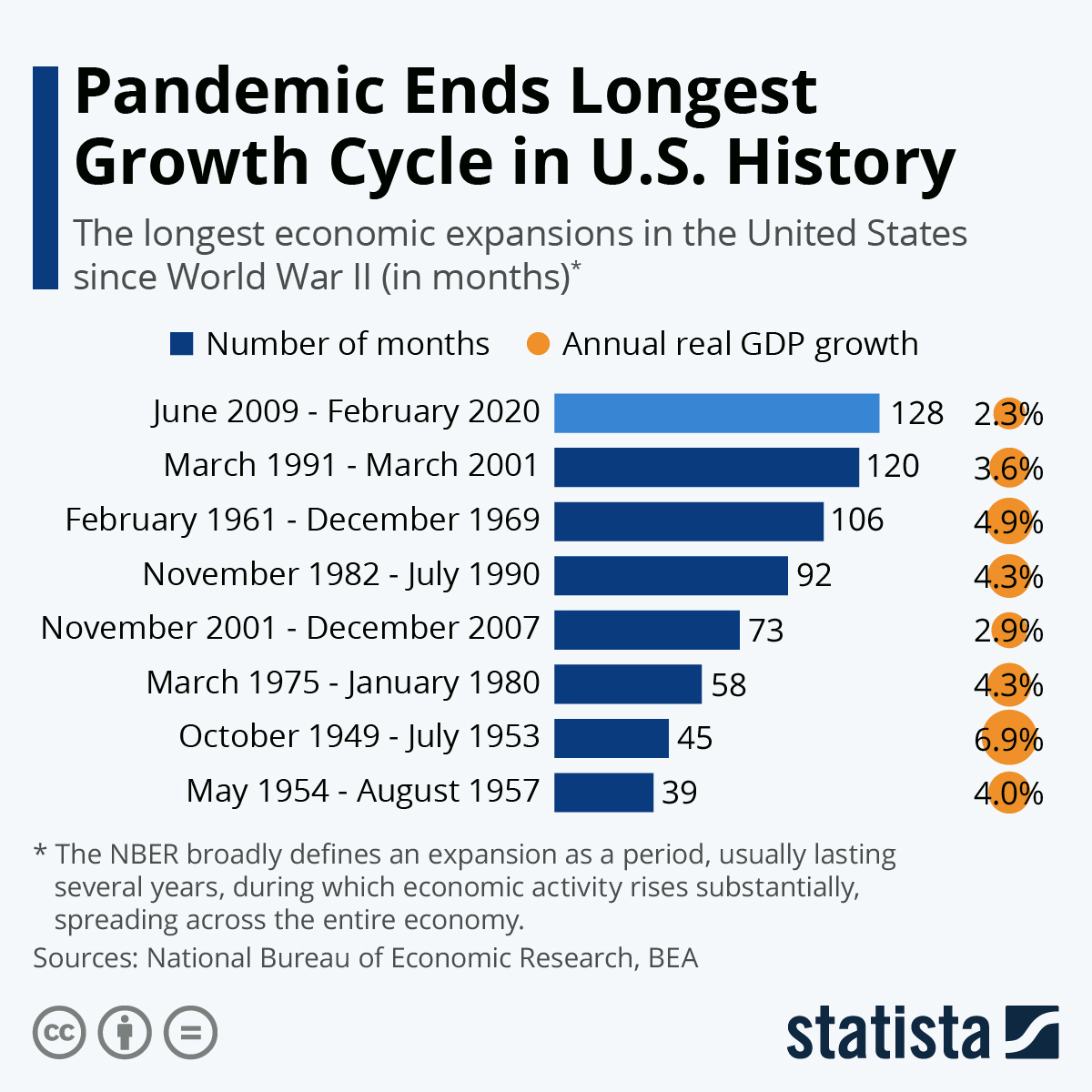What had only been a question of time since the coronavirus pandemic hit the U.S. economy with full force became official this week: the United States is in a recession.
On June 8, 2020, the National Bureau of Economic Research (NBER), the semi-official chronicler of economic cycles in the United States, announced that February 2020 marked a peak in economic activity, signaling the end of the expansion that began in June 2009 and the beginning of a recession. Identifying the date of a trough/peak in economic activity is a complex task carried out by the Business Cycle Dating Committee, a panel of 10 renowned economic researchers, that involves weighing the behavior of various indicators to pinpoint turning points in economic activity as accurately as possible.
As the following chart shows, the latest expansion was the longest ever, trailed by the growth cycle that lasted from March 1991 to March 2001 and culminated in the bursting of the dot-com bubble. As opposed to many shorter growth periods of the past, the most recent one was characterized by moderate growth. With an average annual GDP growth of 2.3 percent, the longest upturn was in fact the second slowest since the end of World War II.
Ironically, the longest expansion in U.S. history was also likely the one that ended most abruptly. Prior to the coronavirus pandemic, unemployment was historically low, and nothing pointed towards a coming downturn. Acknowledging the unique characteristics of the current contraction and the fact that “the usual definition of a recession involves a decline in economic activity that lasts more than a few months,” the NBER concludes “that the unprecedented magnitude of the decline in employment and production, and its broad reach across the entire economy, warrants the designation of this episode as a recession, even if it turns out to be briefer than earlier contractions.”













